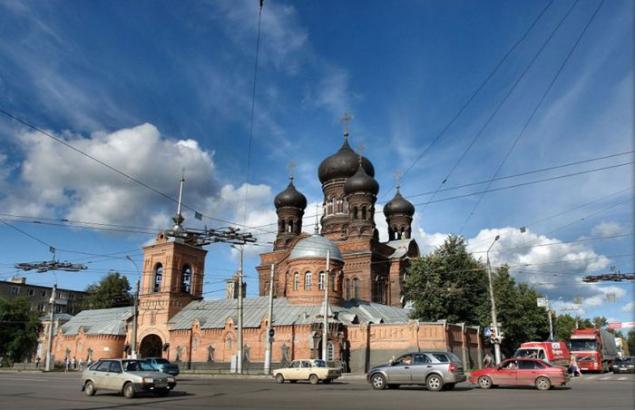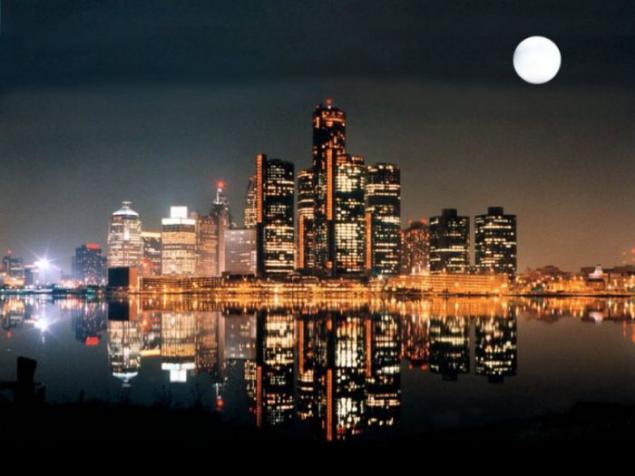779
Cities which will disappear
Ivanovo, Russia. Reason: The outflow of population
The center of textile production during the Soviet era, the regional center in the north-east of Moscow currently has a population of about 448,000 people, is constantly decreasing. The number of women than men, the birth rate is falling, and the mortality rate is increasing. Educated young people go to Moscow, as the city is practically no modern industry

Detroit, USA. Reason: The outflow of population
Detroit's population has decreased by a third since 1950, to about 950,000 people. It is expected that its population will decline slowly but steadily, at least until 2030 - the unemployment rate in the city is more than 10%. (In turn, the population of the suburbs around Detroit is constantly growing). If these trends continue, Detroit will change beyond recognition by 2100.

Venice, Italy. Reason: Lower ground level
City Channel has lowered around for millennia, but in the last century the rate of descent increased markedly. Over the past 100 years Venice has fallen by 24 centimeters. The government has plans to protect the city from rising to the level of the sea, but if it works or not, nobody knows.

Mexico City, Mexico. Reason: Lack of drinking water and soil subsidence
Mexico City is sinking. The city stands on the aquifer, which is also the main source of drinking water. Every time one of the 20 million residents of drinking water, the city sinks a little. According to some estimates, over the past 100 years, some parts of the city fell to 9 meters. Potentially even worse. It is assumed that the aquifer is depleted. Although Mexico is now growing rapidly, diminishing water supplies, and lowers soil - all of which can quickly reverse the trend.

Naples, Italy. Reason: Eruption
The volcano Vesuvius, which destroyed Pompeii in 79 BC, erupts about once every 100 years. Last time the eruption in 1944. Vesuvius is located in the Bay of Naples in southern Italy, which is home to more than 4 million people. This figure includes not only the population of Naples, but also more than half a million people living in the "red zone" adjacent to the volcano, the people who are likely to die if they are not evacuated in time.

Timbuktu, Mali. Reason: Desertification
Desertification, when the sand dunes advancing on fertile land, is a problem for a number of countries in the south of the Sahara. The greatest danger threatening the city of Timbuktu in Mali, a city older than 1000 years, which was an important center of Islamic learning in the 15th and 16th centuries.
In Mali, they conducted several projects to re-green the area, but some parts of the city is half covered with sand.

San Francisco, USA. Reason: Earthquake
Researchers from the University of California with a probability of 75% predict that by 2086 in the San Francisco earthquake will happen 7 points or more. San Francisco is also one of the fastest changing cities in the US. All of this is part of the displacement of the expensive and geographically hazardous coastal areas inland. Most of the trouble may accelerate this trend.

The center of textile production during the Soviet era, the regional center in the north-east of Moscow currently has a population of about 448,000 people, is constantly decreasing. The number of women than men, the birth rate is falling, and the mortality rate is increasing. Educated young people go to Moscow, as the city is practically no modern industry

Detroit, USA. Reason: The outflow of population
Detroit's population has decreased by a third since 1950, to about 950,000 people. It is expected that its population will decline slowly but steadily, at least until 2030 - the unemployment rate in the city is more than 10%. (In turn, the population of the suburbs around Detroit is constantly growing). If these trends continue, Detroit will change beyond recognition by 2100.

Venice, Italy. Reason: Lower ground level
City Channel has lowered around for millennia, but in the last century the rate of descent increased markedly. Over the past 100 years Venice has fallen by 24 centimeters. The government has plans to protect the city from rising to the level of the sea, but if it works or not, nobody knows.

Mexico City, Mexico. Reason: Lack of drinking water and soil subsidence
Mexico City is sinking. The city stands on the aquifer, which is also the main source of drinking water. Every time one of the 20 million residents of drinking water, the city sinks a little. According to some estimates, over the past 100 years, some parts of the city fell to 9 meters. Potentially even worse. It is assumed that the aquifer is depleted. Although Mexico is now growing rapidly, diminishing water supplies, and lowers soil - all of which can quickly reverse the trend.

Naples, Italy. Reason: Eruption
The volcano Vesuvius, which destroyed Pompeii in 79 BC, erupts about once every 100 years. Last time the eruption in 1944. Vesuvius is located in the Bay of Naples in southern Italy, which is home to more than 4 million people. This figure includes not only the population of Naples, but also more than half a million people living in the "red zone" adjacent to the volcano, the people who are likely to die if they are not evacuated in time.

Timbuktu, Mali. Reason: Desertification
Desertification, when the sand dunes advancing on fertile land, is a problem for a number of countries in the south of the Sahara. The greatest danger threatening the city of Timbuktu in Mali, a city older than 1000 years, which was an important center of Islamic learning in the 15th and 16th centuries.
In Mali, they conducted several projects to re-green the area, but some parts of the city is half covered with sand.

San Francisco, USA. Reason: Earthquake
Researchers from the University of California with a probability of 75% predict that by 2086 in the San Francisco earthquake will happen 7 points or more. San Francisco is also one of the fastest changing cities in the US. All of this is part of the displacement of the expensive and geographically hazardous coastal areas inland. Most of the trouble may accelerate this trend.

























